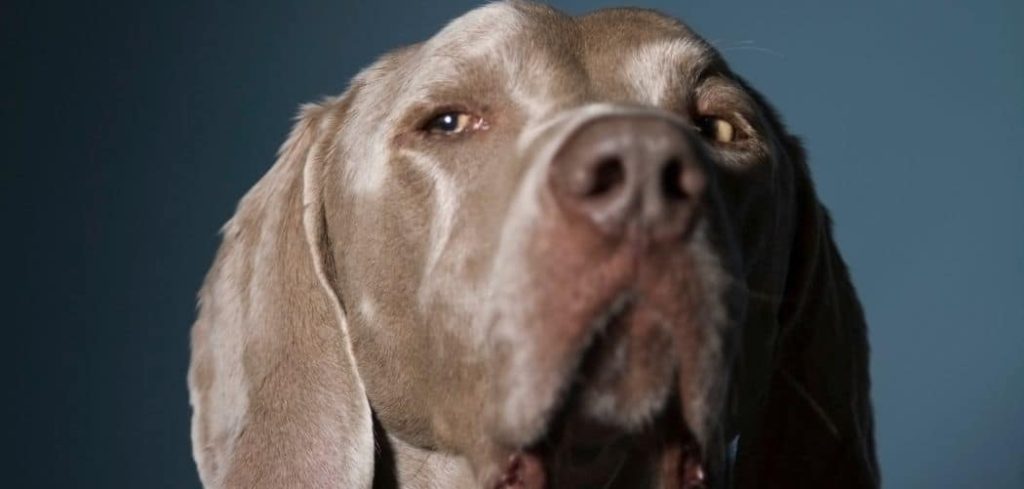Involuntary thrusting in older dogs can be alarming for pet owners and may indicate underlying health or neurological issues.
When an older dog begins to exhibit repeated, uncontrolled movements of the hips or pelvic area, it’s important to understand potential causes and how to respond. Recognizing these signs early helps protect your dog’s comfort and overall well-being.
We outline the common reasons for old dog involuntary thrusting, what you can do at home, and when to seek veterinary help.
Old Dog Involuntary Thrusting — Why It Happens
Involuntary thrusting in older dogs can stem from a range of medical, neurological, or hormonal issues. Conditions such as seizures, urinary tract infections, cognitive decline, spinal or nerve disorders, and hormonal imbalances may all contribute.
Pain, discomfort, or sudden excitement can sometimes trigger the behavior. Understanding the underlying cause is essential to ensure your dog receives appropriate care and relief.

Old Dog Involuntary Thrusting: Common Causes
Seizures
Seizures can lead to sudden, involuntary movements in an older dog, including thrusting.
During a seizure, nerve signals in the brain become abnormal, causing uncontrolled muscle contractions. Owners may notice twitching, drooling, disorientation, or collapse in addition to thrusting.
Seizures can indicate serious neurological or metabolic issues and require prompt veterinary evaluation.
Read more: Old Dog Seizures and Throwing Up (Understanding neurological signs)
Urinary Tract Infection (UTI)
Urinary tract infections can irritate the bladder and pelvic muscles, triggering involuntary movements.
Signs of a UTI may include frequent urination, straining, accidents indoors, blood in the urine, and discomfort in the lower abdomen. If left untreated, infections can worsen, leading to more frequent involuntary movements and general discomfort.
Spinal or Nerve Disorders
Degenerative disc disease, spinal injuries, or nerve compression can cause involuntary hip or pelvic movements.
These conditions interfere with signals from the brain to muscles, resulting in repetitive thrusting or other abnormal behaviors.
You may notice limping, difficulty walking, weakness, or pain. Addressing spinal or nerve issues early can prevent further deterioration and improve quality of life.
Hormonal Imbalances
Hormonal changes, particularly in older unneutered male dogs, can contribute to involuntary thrusting.
Testosterone fluctuations or other endocrine disorders may lead to increased sexual behaviors or uncontrolled pelvic movements.
Signs can include frequent mounting, heightened excitement, and changes in behavior. Veterinary guidance is essential for diagnosis and management.
Cognitive Dysfunction
Age-related cognitive decline may result in repetitive or abnormal movements, including thrusting.
Dogs experiencing canine cognitive dysfunction may forget commands, wander aimlessly, and perform repetitive behaviors. Owners may notice increased confusion, disrupted sleep patterns, or disorientation in addition to involuntary thrusting. Routine, structure, and veterinary advice can help manage symptoms.
Pain or Discomfort
Pain in the hips, lower back, or pelvis can sometimes cause dogs to move or thrust involuntarily.
Arthritis, hip dysplasia, or soft tissue injuries can trigger sudden movements as the dog attempts to adjust or relieve pressure.
Observing other signs of pain, such as limping, stiffness, or reluctance to move, helps identify the root cause and guide treatment.
What to Do
Ensure your dog is in a safe, comfortable space to prevent injury during involuntary movements.
Observe and record the frequency, duration, and circumstances of thrusting to provide detailed information to your veterinarian.
Avoid scolding or punishment, as the behavior is often involuntary or medically driven.
Maintain a consistent routine and limit stressors that may trigger excitement-related thrusting.
Work closely with your veterinarian to identify and treat underlying causes, which may include medications, pain management, or behavioral support.
When to Call or Visit Your Vet
Seek immediate veterinary care if involuntary thrusting is accompanied by seizures, collapse, persistent pain, or unusual lethargy.
Any sudden onset of repeated thrusting or new neurological signs should be evaluated promptly.
Other warning signs include difficulty walking, blood in urine, changes in appetite or behavior, or signs of significant discomfort.
Timely veterinary assessment can identify underlying conditions, prevent complications, and improve your dog’s quality of life.
Read more: Old Dog Incontinence (Managing bladder control in seniors)
Key Takeaway
Involuntary thrusting in older dogs can result from seizures, urinary infections, spinal or nerve issues, hormonal changes, cognitive decline, or pain. Careful observation, safe environments, and timely veterinary evaluation are crucial.
With attentive home care, structured routines, and professional guidance, most older dogs can experience relief from involuntary thrusting and maintain comfort and dignity in their senior years.
